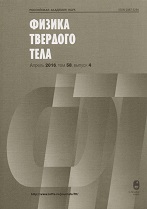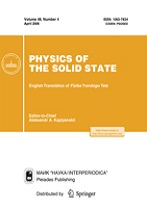|
This article is cited in 15 scientific papers (total in 15 papers)
Mechanical properties, strength physics and plasticity
On wave and rheidity properties of the Earth's crust
A. V. Vikulina, Kh F Makhmudovb, A. G. Ivanchinc, A. I. Gerusad, A. A. Dolgayaae
a Institute of Volcanology and Seismology, Far East Branch, Russian Academy of Sciences, Petropavlovsk-Kamchatsky, Russia
b Ioffe Institute, St. Petersburg
c Institute of Monitoring of Climatic and Ecological Systems, Siberian Branch of the Russian Academy of Science, Tomsk
d Vitus Bering Kamchatka State University, Petropavlovsk-Kamchatsky, Russia
e Kamchatka State Technical University
Abstract:
The properties of the Earth’s solid crust have been studied on the assumption that this crust has a block structure. According to the rotation model, the motion of such a medium (geomedium) follows the angular momentum conservation law and can be described in the scope of the classical elasticity theory with a symmetric stress tensor. A geomedium motion is characterized by two types of rotation waves with shortand long-range actions. The first type includes slow solitons with velocities of 0 $\le V_{\operatorname{sol}}\le c_{0,{\operatorname{max}}}$ = 1–10 cm s$^{-1}$; the second type, fast excitons with $V_{0}\le V_{\operatorname{ex}}\le V_{S}-V_{P}$. The exciton minimal velocity
($V_0$ = 0) depends on the energy of the collective excitation of all seismically active belt blocks proportional to the Earth’s pole vibration frequency (the Chandler vibration frequency). The exciton maximal velocity depends on the velocities of $S$ ($V_{S}\approx$ 4 km s$^{-1}$) and/or $P$ ($V_{P}\approx$ 8 km s$^{-1}$) seismic (acoustic) waves. According to the rotation model, a geomedium is characterized by the property physically close to the corpuscular–wave interaction between blocks that compose this medium. The possible collective wave motion of geomedium blocks can be responsible for the geomedium rheidity property, i.e., a superplastic volume flow. A superplastic motion of a quantum fluid can be the physical analog of the geomedium rheid motion.
Keywords:
Soliton, Earthquake Source, Rotation Model, Rotation Wave, Force Moment.
Received: 22.12.2014
Revised: 17.07.2015
Citation:
A. V. Vikulin, Kh F Makhmudov, A. G. Ivanchin, A. I. Gerus, A. A. Dolgaya, “On wave and rheidity properties of the Earth's crust”, Fizika Tverdogo Tela, 58:3 (2016), 547–557; Phys. Solid State, 58:3 (2016), 561–571
Linking options:
https://www.mathnet.ru/eng/ftt10053 https://www.mathnet.ru/eng/ftt/v58/i3/p547
|


| Statistics & downloads: |
| Abstract page: | 29 | | Full-text PDF : | 14 |
|





 Contact us:
Contact us: Terms of Use
Terms of Use
 Registration to the website
Registration to the website Logotypes
Logotypes








 Citation in format
Citation in format 
